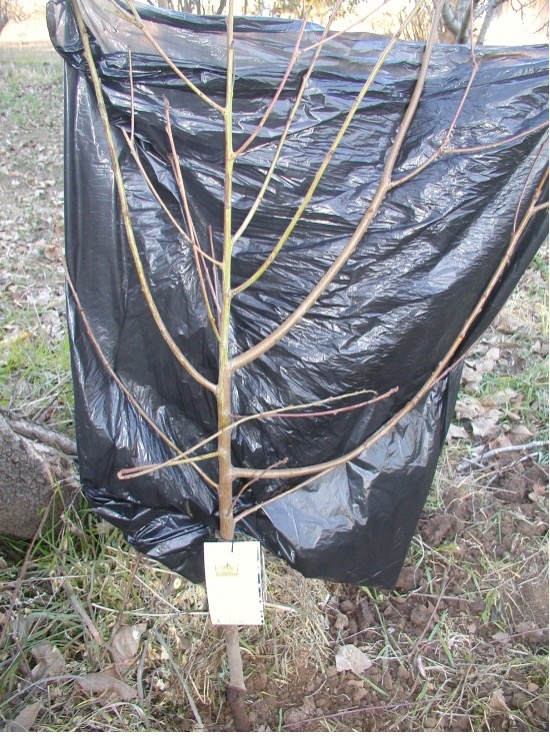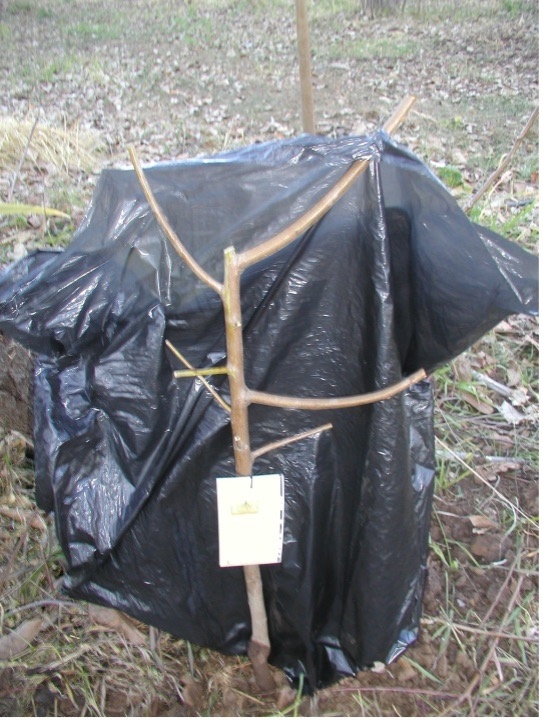A Question from the Help Desk – New Fruit Trees
Question: I am buying some fruit trees this fall for a small backyard orchard. What trees are best to buy and how do I prune the trees to get them started correctly?
This is a great question and I have had a lot of experience with backyard fruit trees. I can tell you a bit about my experience in selecting what trees to grow.
Selecting a Tree
The tree that I most enjoy is the Red Haven peach tree, which is excellent for backyards. It starts to produce early and the fruit does not ripen all at once, as happens with many peaches such as the Elberta variety. The season for Red Haven peaches is nearly a month long starting in late June. The only problem is that you need to assess which peaches are ripe and ready for picking. This process can be somewhat time consuming but it is worth the effort. Plums are also a good backyard fruit tree; Santa Rosa, Satsuma, and Laredo are all good varieties. I prefer the Laredo as it has a longer ripening season, which starts in late July and extends to about September 1. The plums are delicious. The Santa Rosa plum, like most peaches, has a short season and the plums fall off after 2 to 3 weeks of availability. The Satsuma plum is a large, firm plum with red flesh and is a good cooking plum for jams or canning as well as eating fresh. It does well in the Central Valley and ripens in August.
Citrus are also an excellent choice for the Central Valley as many varieties can be grown. Lemons, oranges, grapefruit and tangerines can be all be enjoyed in our mild climate. They are relatively trouble free and provide very useful fruit.
Growing apples in the backyard is a bit trickier as codling moth is a common pest that will need to be dealt with. Apples and pears are also vulnerable to fire blight. Several dwarfing apple rootstocks are available, which makes it easy to grow small trees in a backyard orchard. Cherries are another fruit that can be grown in the backyard, and they can be kept to 8 feet tall on dwarfing rootstock. I would avoid buying multi-grafted trees as one or two of the grafts will become dominant.
The First Pruning
To start out your orchard trees properly, it is important to prune them after planting. For most semi-dwarf or standard trees, they need to be pruned with a heading cut to start them on their way correctly. This first pruning can look brutal, but it is essential.
The heading cut—in the range of 20 to 30 inches from the ground—will not only encourage the development of scaffold branches but also open up the center of the tree to develop a vase or bowl shape that allows the sun into the center to help ripen fruit. A tree with 3 to 4 scaffold branches, which should also be headed back, is the desired result. Almonds, apricots, peaches, cherries, plums, and prunes all do best with a vase-shaped tree with an open center.
A young new bare-root peach tree before and after the initial pruning:
Apples can also be trained in this manner. However, apples, Asian pears, European pears, figs, persimmons, and quinces are more often trained to a central leader. With a central leader, a heading cut is not done. Instead the central leader is allowed to grow and dominate the tree.
For more information on pruning backyard fruit trees see this UC Davis site.
Good luck with your new backyard orchard venture!

